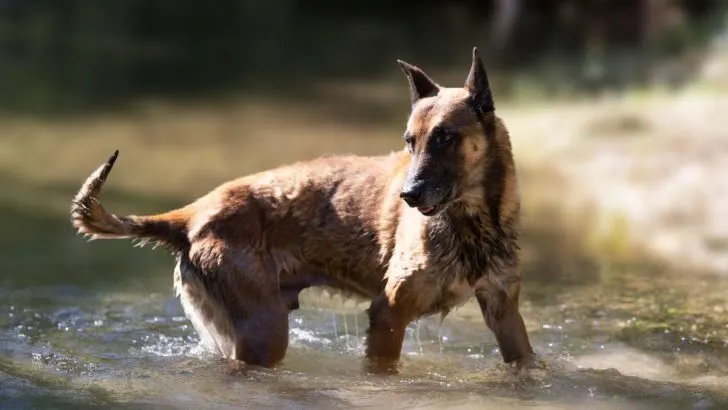If you recently saw the latest John Wick movie and wanted to know if fawn sable is the only Belgian Malinois color, worry not.
Today, we are taking a closer look at this ferocious working dog and all the colors it might come in.
These medium-sized dogs have unusually high levels of activity. This breed dates back to the early 1800s. While making the Belgian Shepherd, the breeders tried to create a strong herding and security dog that lived to work.
They definitely managed to do so, but these dogs are not pets; Mals can often be seen working as military and police dogs.
Let me explain everything there is to know about Belgian Malinois colors and the reasons behind the different hues.
We are covering not only standard Belgian Malinois coat colors accepted by the American Kennel Club (AKC) but also those that are not.
1. Sable Belgian Malinois
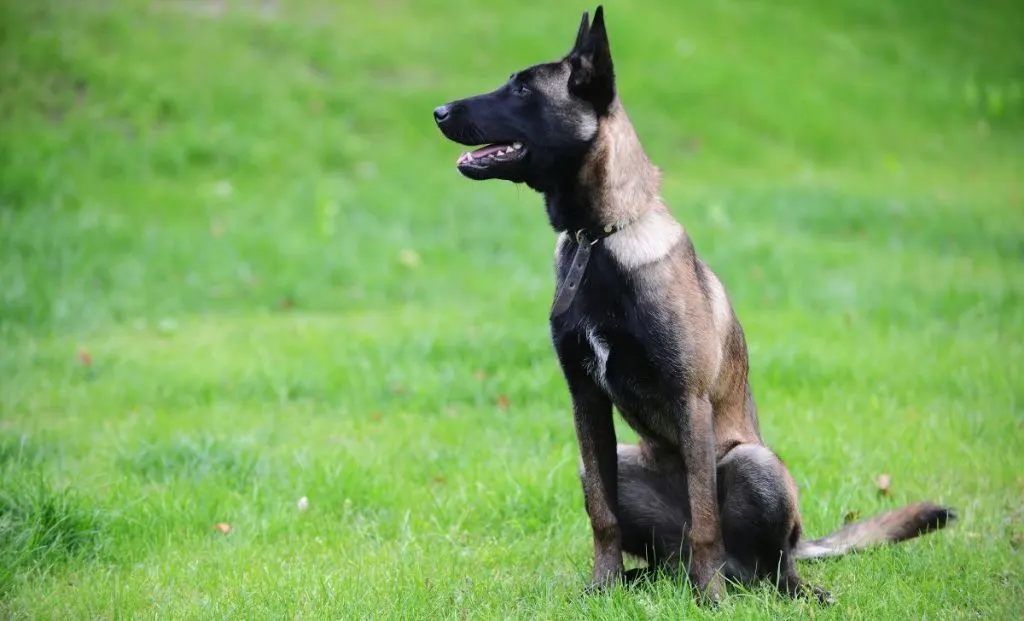
Belgian Malinois typically have only one standard color pattern: sable with a black mask.
That means most Malinois have a coat pattern with shades of sable (ranging from light to dark) and a black mask on their face. This color pattern is determined by specific genetic markers, resulting in a coat that appears sable with a distinct black mask.
Even though they all share the same basic pattern, we can still notice some degree of variety there.
The primary and most noticeable difference between the colors of Belgian Malinois is the amount of dark shading making up the black mask.
The size of the mask also varies, and we can notice some differences in the intensity of the yellow pigment in the base coat of individual dogs.
Out Of Standard Coat Colors
In all dog breeds, we can see nonstandard colors occurring.
Ethical and responsible breeders usually avoid them, but puppy mills and other unethical sources often breed them on purpose because they can be sold for more money as rare colors to uneducated people
You should never select a Malinois puppy (or any other puppy, for that matter) based on its coat color.
It is effortless to produce so-called rare colors. They are rare only in the well-bred purebred population, but can be quickly made if you have any understanding of color genetics.
Nonstandard patterns and colors happen by accident, thanks to recessive alleles.
Usually, recessive traits will be expressed in pups that inherit one copy from each dam and the sire. Dogs with just one copy can carry and pass on these traits over generations, in the case of the Mal.
Genes that produce non-standard colors might have been around since the beginning of this breed.
Others are probably introduced as a side effect of crossbreeding (for example, in KNPV lines of dogs) where color is not a big deal; only the final product (excellent working dog) matters.
2. Black Belgian Malinois
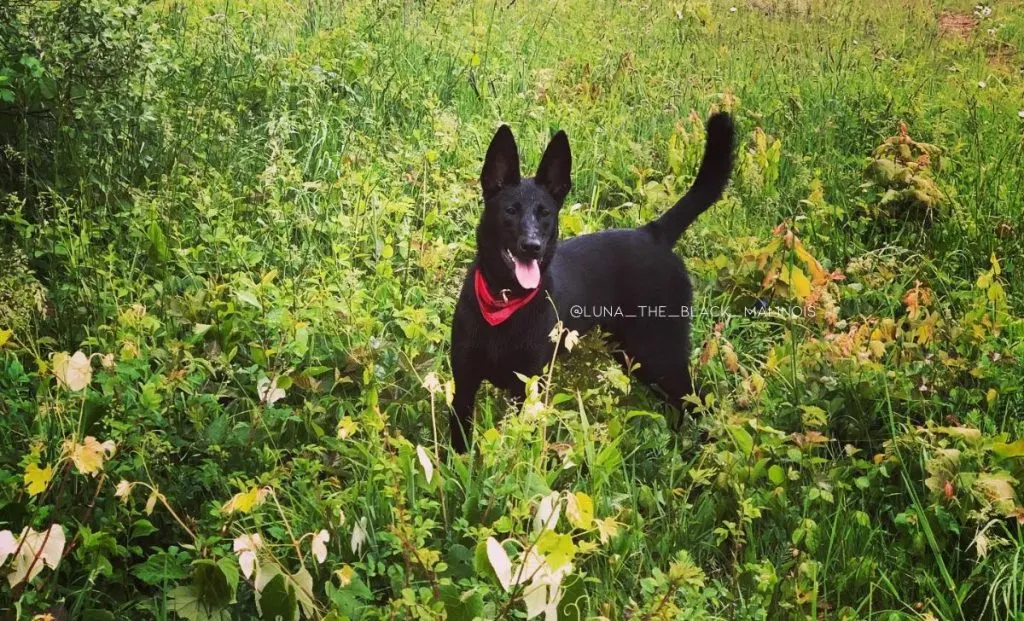
Before we dive in deeper, for those of you who do not know, the Belgian Shepherd has four different varieties that differ in coat type and color.
We have the Malinois, the Groenendael, the Laeken, and the Tervueren. The FCI standard puts together all varieties under the Belgian Shepherd label.
So, it’s theoretically possible to produce shorthaired black Belgian Shepherds by crossing purebred Groenendaels with Malinois.
The product – black Malinois- is why most of the official breed clubs do not wish for the Groenendael x Malinois cross to happen.
The Groenendael have both recessive black and dominant black genes, but most solid black Mals seem to be the recessive black carries. What does that mean, tough?
Dominant black means that one parent needs to be black, while recessive black Malinois puppies can easily be born out of typical sable patterned parents if both of them are carriers.
Solid black short fur is considered a major fault in the show ring. However, some working line breeders regularly produce black litter because they breed for work capabilities, not appearance.
3. Blue Belgian Malinois
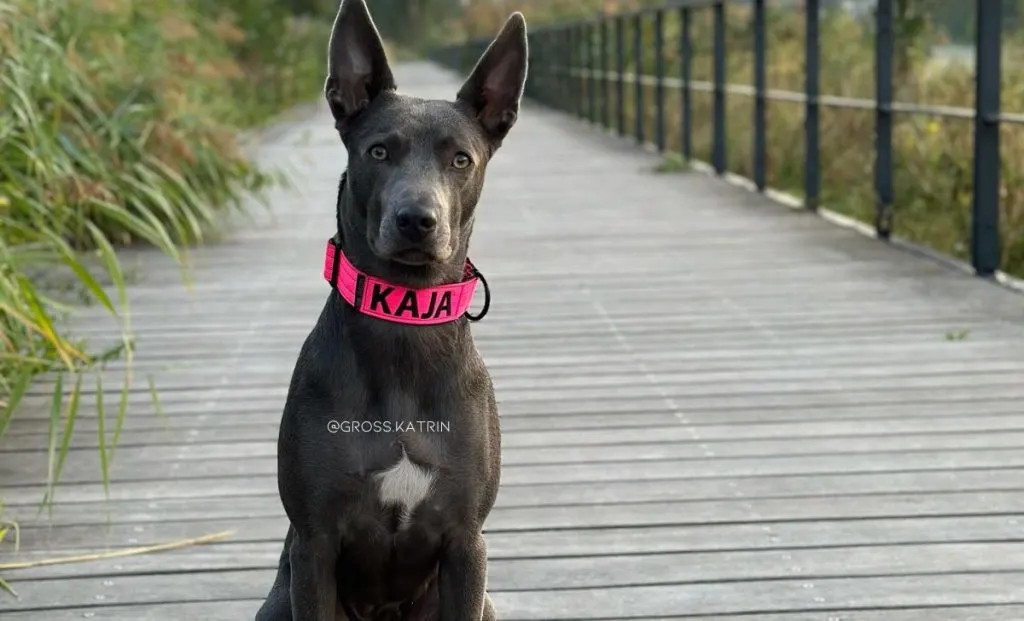
When color dilution happens, it turns all the dark pigment in his pattern blue.
The melanistic mask and the dark tips in the sable pattern also cause a silver overlay.
Color dilution also causes blue color to appear on nails, lips, paw pads, skin and nose pigment, eye rims, and nails.
The shades of blue included can range from light gray to some type of slate gray to even dark charcoal gray.
Blue Belgian Malinois almost always have lighter eyes. Blue pigment in this breed excludes the dog from breeding.
The blue color is caused by having two non-functional versions of the D-Locus or MLPH gene. Dogs with at least one wild allele type can usually distribute melanosomes from pigment cells into their hair shafts.
Dogs with two defective alleles have blue pigment due to a defective pigment transport system.
4. Liver Belgian Malinois
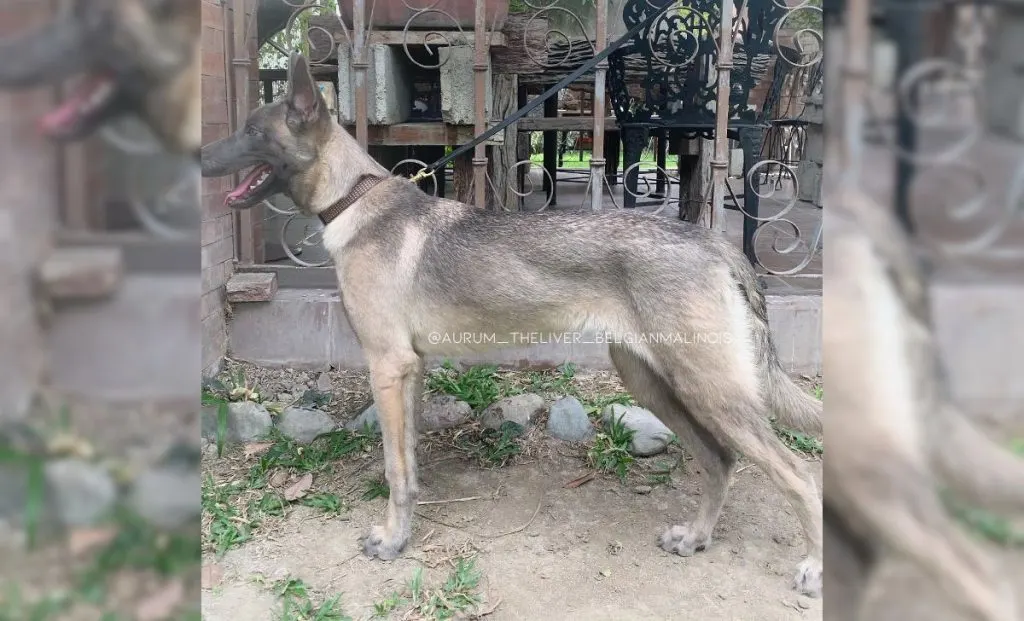
One of the rarest traits naturally occurring in the Belgian Mal is chocolate brown color.
Dogs must have one b allele from the sire and the dam to express brown eumelanin.
Thanks to this, the nails, paw pads, lips, eye rims, and skin pigment are all brown. It also causes a liver or brown nose, face mask, and fur banding in the coat.
5. Brindle Belgian Malinois

If we take a look at the breed standard, we will see that brindles are a faulty pattern of coat for all types of Belgian Shepherds. However, one of the sister breeds is known for the brindle pattern on their coats – the Dutch Shepherds.
Both the Malinois and the Dutchie basically come from the same stock. While the brindle pattern is selected for in Dutch Shepherds, it is selected against in Belgian Shepherds.
This is actually a rule invented at the beginning of the last century to set apart these highly related breeds.
Although most working dog breeders don’t care much about artificial concepts like this, making brindle not that uncommon in performance-bred litters.
The brindle pattern adds a layer of black vertical stripes on top of the existing tan pigment. Since brindle is a dominant or unbridled sable coat, it can not happen spontaneously.
Brindle Malinois always come from brindled parents (with one exception being solid black pups where the pattern is not really visible)
6. Agouti Belgian Malinois
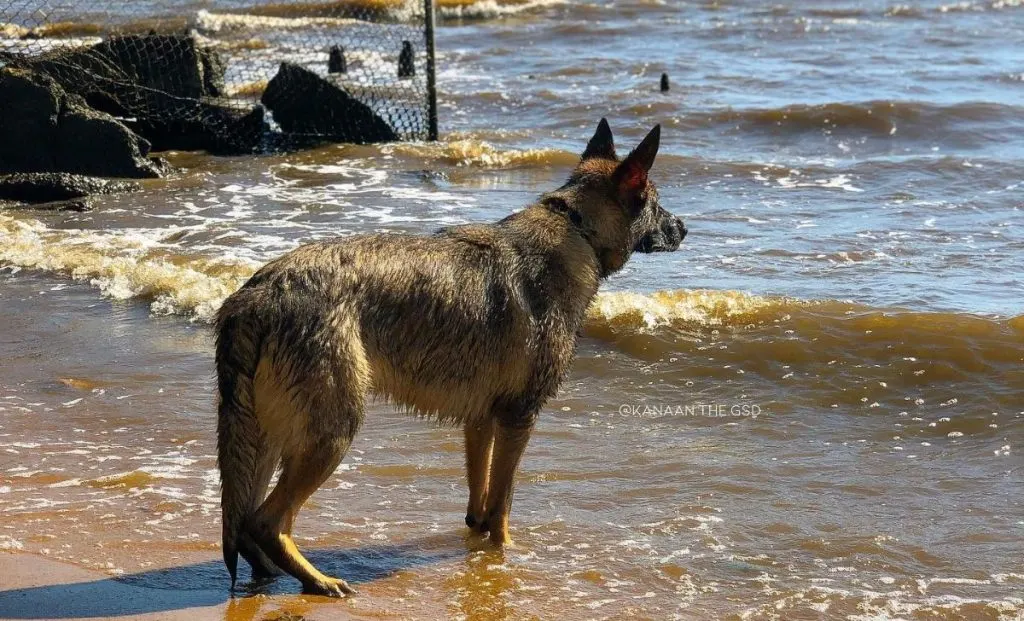
If you are not sure what that means, take a look at the working line German Shepherds who often have the agouti pattern; it is also called wolf sable.
A small amount of Belgians have it, too. Agouti carriers will have more black in their sable shading than expected. However, only homozygous agouti pups will express a wolf sable pattern.
That causes fur banding made up of many light and dark bands. Agouti pups tend to be much darker than sable and should look almost black at birth.
This pattern tends to add a lot of banded hairs to the legs and back of the dog and a dark nose bar to the head with lighter non banded fur around the underside of the dog as well as eyes, chin, and eyebrows.
But as I already mentioned, in the Malinois breed, most of the agouti face markings end up hidden underneath the black mask. Let us not forget that Malinois are known for having darker shading than is expected from a sable pattern.
So just like that, agouti dogs might not be that obvious, and they might often go unnoticed in this breed.
For an example, let us take a quick look at this purebred FCI Mal. Lebenswolf Agent Boom was tested as being homozygous agouti. However, confirmation reports say he had the correct brown base color and very strong charbonnage over his entire body
7. Black And Tan
Even though they are infrequent, black and tan Mals are not unheard of.
Only a tiny percentage of purebred sable Mals carry tan points. Bering two carriers can cause the puppies to have two copies of the gene and actually express the pattern.
Looking for examples to back up the facts, I found one xMal with this pattern. His name is Flik van de Leibeekhoeve, and you can check him out.
As we said, the Belgian Malinois color patterns must include a melanistic mask, meaning the tan points on the dog’s face tend to be covered under the black coat.
A minimal number of working line Mals can express a saddle pattern, probably from a crossbreeding with a German Shepherd in the past.
The pups are born with a black and tan pattern on them. However, most of the black color will face until only a black saddle remains.
A quick look at the breed standard will indicate that the black overlay set in patches is a fault.
8. White Belgian Malinois
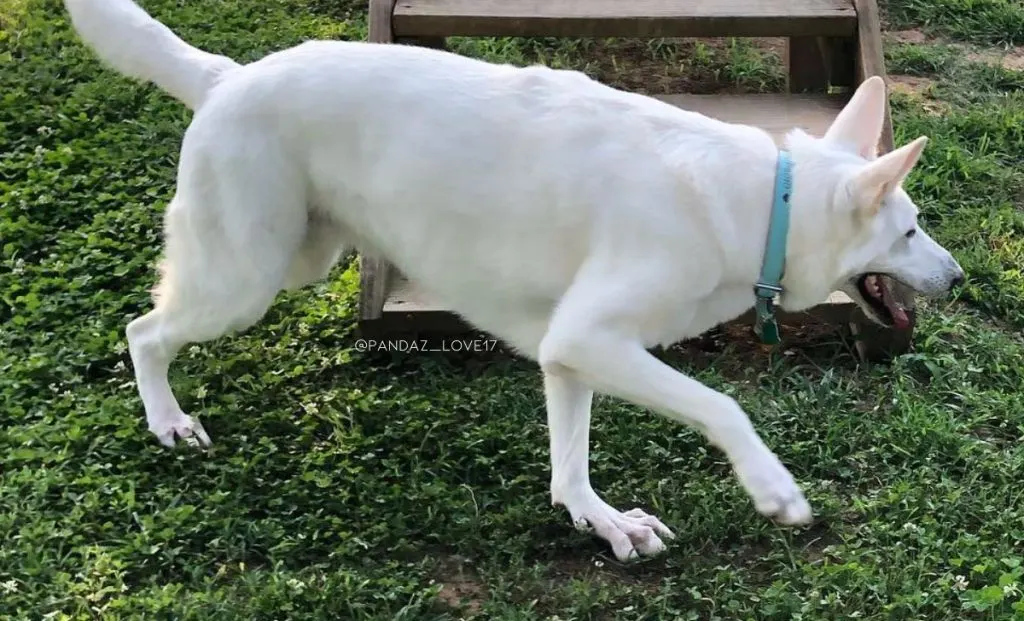
There is no such thing as an all-white or albino-white Malinois.
Recessive red with extremely low phaeomelanin intensity is the most common cause for a solid white coat in any shepherd dog.
That means two things: the dogs can only produce tan pigment, and they can’t have a single black hair on them, and number two, their tan pigment is almost white in color.
But let us return to the fact that all Malinois have a black mask once again. A puppy or a dog with an e/e genotype can not be born from purebred parents. To my knowledge, there is no e allele in the Belgian Shepherd and no albinism.
If you see Malinoiss advertised for its white color, such dogs get this trait from crossbreeding.
Belgian Malinois Eye and Nose Color
According to the breed standard of all the major breed clubs, the lips of the dog have to be black. The standard also calls for black-rimmed eyelids and a black nose without any traces of depigmentation.
This leaves no wiggle room and is the main reason why the Belgian Malinois is almost fixed for black eumelanin. This, of course, affects all eumelanin on the body, including the sable shading, as well as the masks, eyes, and nose.
However, let us not forget the dogs with color dilution genes or liver genes.
This also creates slim chances for Malinois puppies to be born with blue eumelanin and a slate gray nose or brown eumelanin and a chocolate brown nose when breeding from carriers or an affected dog
Both of these traits are rare when not bred on purpose. In the basic sense, they never met in the wild, so there are no purebred Mals with diluted brown or lilac pigment.
The different breed standards call for eyes to be brown, preferably dark brown.
Phaeomelanin And Eumelanin
If we talk about the true colors of the Belgian Malinois, we must touch upon the topic of pheomelanin and eumelanin.
Phaeomelanin is one of two pigment types that can be found in our dog’s coat. Eumelanin is the other one.
Phaeomelanin is a red pigment, while eumelanin makes brown or black coat colors. Different proportions of those pigments create different coat patterns for dogs.
The Belgian Malinois, like most dog breeds, only produces some of the many possible colors and patterns. The Belgian Malinois colors and variations are named for the phaeomelanin intensity.
Based on the final color produced, the variations are named:
- Grey coat
- Cream coat
- Silver coat
- Fawn coat
- Red coat
- Mahogany coat
When we talk about the base coat, most often, it ranges from yellow to rusty red to orange-red.
According to the Fédération Cynologique Internationale (FCI) standard, all these colors are fawn.
At the same time, the American Kennel Club (AKC) makes a difference between yellow (within the AKC that is fawn), orange-red (they refer to it as red), and red (in AKC, called mahogany) dogs.
The Kennel Club (KC) is the only big breed club that recognizes gray as an okay shade of the phaeomelanin pigment.
Sable Shading
Being the FCI, AKC, or KC, all breed standards request a black mask and some black overlay.
There is a difference and an enormous degree of variety between individual dogs. Many specimens of the Malinois breed appear to be clear sable.
That means their adult, almost solid yellow coats have slight black tipping along the rear. The mask might cause some small overlay.
Shaded sable, however, causes the dog to have black tips on some of the hairs.
Shading is most prominent on the dog’s upper body (shoulders, back, and sides), often intensified when combined with a black mask.
It can frequently cause a darker black tip on the tail and a black triangle on top of the supracaudal gland.
It is unknown what modifiers cause some dogs to have more or less shading than others.
- The American Kennel Club
If we take a look at the AKC website, it distinguishes between two patterns. Those with little black overlay (red, mahogany, fawn) and those with obviously present black overlay (red sable and fawn sable)
Admittedly, this can be a bit confusing since all Belgian Malinois are sable patterned, as we have already mentioned.
It seems the AKC just uses the term “sable” as a breed-specific synonym for the pronounced black shading present in these dogs.
- The Kennel Club
Likewise, the Kennel Club website lists patterns like a fawn, fawn black mask, fawn black mask and fawn black overlay as different breed standard colors.
This implies they probably depend on the subjective impressions of the size of individual characteristics.
The Kennel Club uses the term light dusting for dark sabling.
- Fédération Cynologique Internationale
The French version of the standard calls the black overlay on the dog charbonné, which refers to the “flamed” or charred look on every Belgian Malinois’ sable pattern.
The shaded sable develops as the dog ages. You can expect a Malinois puppy to go through a few different stages.
Usually, they are born with a lot of black in their fur, and as they age, it becomes a more yellowish coat, and when they mature, the black hair tips usually reappear (in case the dog is clear sable, there will be no black tips).
Environmental factors like seasonal changes and the coat change that goes along with it can make the amount of dark hair tips fluctuate.
A very small percentage of the Malinois dog seems to be agouti carriers or tan point carriers.
The agouti often goes unnoticed since many Malinois dogs are already darkly patterned. In addition, their mask covers any agouti facial markings that would give them away.
Extreme Black Shading
Some examples of the Malinois breed exhibit an extreme version of black shading.
Most of them test in genetic testing like any other regular Mal, looking almost solid black.
There is no indication of what causes extreme black overlay. One of the possible ideas is that it has something to do with an extended black mask.
But in some cases, we see extreme shading in non-masked dogs.
This means it might be more a matter of another unknown modifier that adds a lot of eumelanin to the hair in sable coats.
Some fractions of breed fanciers think extensive sable shading does not adhere to the breed standard (the standard lists too much black overlay as a serious fault).
But I feel obliged to mention that while standards say the dog should have a black overlay, they don’t provide a definition for the maximum amount of acceptable black color.
Black Masks
A dark or black mask is a mandatory part of the Malinois dog’s markings. These days, it is one of the trademarks of the breed.
However, if we take a look at Mal’s history, we will find some dogs without back masks.
The modern standard is definitive about a very pronounced mask with only one single black zone that should cover the eyes and the muzzle in black fur or hair.
It also should cause the ears of the dog to be black.
Many specimens of the Malinois breed show some premature greying. This causes white or gray frosting on the muzzle or chin, even in younger dogs.
Little to no masking is considered a fault in the breed, and it would seem that too much masking is a fault as well.
The Kennel Club says they don’t really favor any dogs with a black mask extending above the brow and eye area. By this, they are indirectly excluding some dogs from conformation.
However, mask sizes vary a whole lot in this breed. In some dogs, we notice that the mask is barely as large as the standard requires.
Many Mals have enormous black fur masks covering the cheeks and the forehead.
Again, unknown modifiers seem to cause very extended black masks. Mals are one of the breeds for which we often notice exaggerated masking.
An extended mask can lead to an almost black coat down to the pup’s chest, paws, or underside. In some extreme cases, it will be considered as being too much black overall.
Are Nonstandard Coloured Belgian Malinois Healthy?
Well, in general, they are healthy. Only a few blue Mals seem to suffer from color dilution alopecia (CDA).
CDA appears to favor some lines more than others, but it is generally rare to see in Belgian Shepherds.
That would really be the only health concern when it comes to blue Mals. Blue coat is not usually associated with any other health issues.
It is just that puppy mills that breed for rare colors don’t put much effort into breeding healthy dogs.
It would be best if you never bought this breed from a backyard breeder, nor any other one.
If you are looking for a new puppy and you are dead set on it being a Malinois, please look for an ethical breeder.
If you live in California your research ends today. Look at some of the best Malinois breeders Cali offers. If you are in the UK, don’t worry; we’ve got you covered, as well as the Ontario area.
CDA
CDA is a dog skin condition that causes fur loss and may lead to some skin problems. The first symptom that young adults can notice is hair loss on the tips of their ears.
Not nearly all dogs with blue pigmentation are affected, and most blue Mals today seem in perfect health. We don’t know if this disease only emerges in dogs that are blue or have whatever causes CDA.
Blue fur does not equal CDA; it just means the dog has a higher predisposition to be at risk.
We have breeds that often come with diluted pigment, such as Weimaraners. Breeders have selected against this illness over many generations, finally removing it from the breed.
Other breeders of other breeds simply gave up the fight against the CDA. How, you might wonder. They just banned diluted colors from the breed standards (like the blue or isabella Doberman in FCI countries).
You should be aware that CDA is quite uncommon overall.
A question that might have popped into your head is how to breed something away when you can’t see or test for it. Well, you can not select against something that only appears every few generations.
Overall, color dilution alopecia is not a big problem in blue Malinois dogs.
Why Are Malinois So Special
The Belgian Malinois breed has various capabilities like stamina, strength, high trainability, and the ability to work in a wide range of environmental temperatures, making them a suitable choice for becoming basically any type of working dog.
From a MWD (Military Working Dog) to an exceptional drug detection dog, search and rescue dog, sports dog, etc.
Malinois will not disappoint in any role, except one – being a pet. These skillful working dogs are not pets; please educate yourself as much as you can on the breed before considering adding one more member to your family.

Nandina has been a lifelong dog owner and enthusiast. She shared her home with multiple breeds, including Giant Schnauzers, Cane Corsos, and Huskies. Currently, she is raising a three-year-old rescue and a working-line German Shepherd puppy.
Actively engaged in IGP dog sports for two years, Nandina is a certified instructor for basic obedience and socialization. She works as a trainer in her local dog sports club, and in her spare time, she handicrafts biothane gear for dogs.
